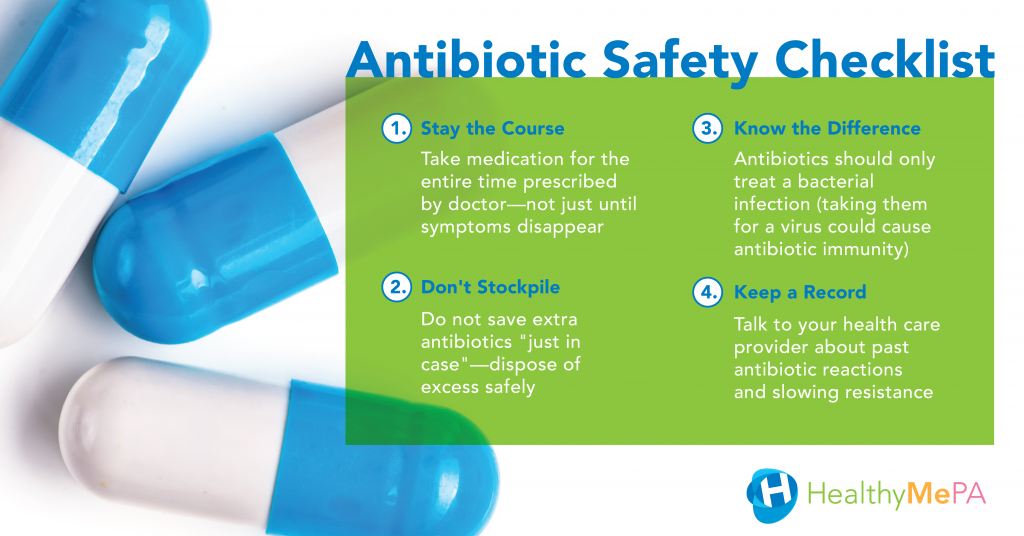Did you know it’s #AntibioticSafetyWeek? Don’t let germs outsmart you—follow these steps to make sure your body can fight infections effectively.
A safe, doctor-prescribed antibiotic treatment course can do a world of good when you’re suffering from a bacterial infection. But this medication is only as good as your body’s ability to fight the bacteria. Follow these important steps from the Centers for Disease Control and Prevention to avoid building antibiotic resistance.

1. Stay the course
Take your antibiotic medication for the entire length of time prescribed by your doctor. Don’t stop just because your symptoms have subsided.
2. Don’t build a stockpile
Don’t save antibiotics for later “just in case”—take them only during the recommended time frame. Safely dispose of excess medication.
3. Know your risks
Be particularly cautious if you or someone you love is part of a demographic that’s vulnerable to antibiotic-resistant bacteria:
- Premature infants and children
- The elderly
- Burn victims
- Bone marrow transplant patients
- Patients with weakened immune systems
4. Spot the difference
It’s important to understand that antibiotics will help only in the case of a bacterial infection. They will not help to cure a virus, and they could hurt you by causing your body to build its antibiotic immunity. Viral infections include:
- Ear infections
- Sinus infections
- Coughs/bronchitis
- Common colds
- Sore throats
5. Take preventive measures
Get vaccinated against the flu and other preventable infections to avoid complications and taking unnecessary antibiotics.
6. Communicate with a professional
Talk to your health care provider about how to slow or stop antibiotic resistance.
Related Posts
Check out these other links to learn more about safe use of medicine:
6 Questions to Ask Your Doctor About Opioids
5 Things You Need to Know About Vaccinations
